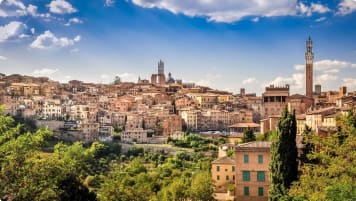Bologna, Italy
Article about Bologna, Italy. This piece forms part of a series of more than 70 articles about Italy and it's history back to the Roman empire to its merchant trading cities of Genoa, Pisa, Almafi and Venice. An Antipodean travel company serving World Travellers since 1983 with small group educational tours for senior couples and mature solo travellers.
29 Jun 22 · 8 mins read
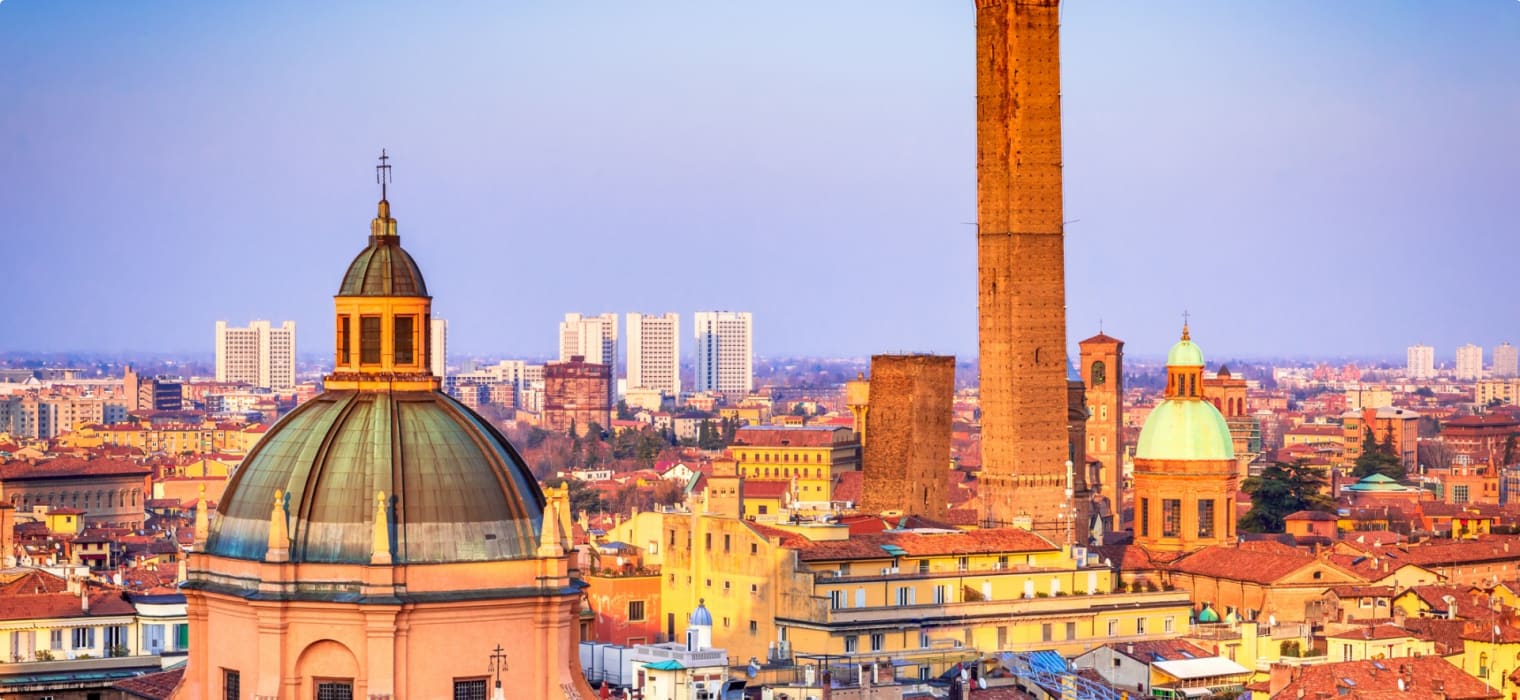
Bologna Italy Tours & History
Bologna city, capital of and largest city of the Emilia Romagna region in Northern Italy, might not be as popular a destination as other Italian cities like Rome and Venice. But for those who are in the know, the city offers unparalleled experiences in art, architecture, and cuisine. The city has a long history, tracing its roots all the way back to the Bronze Age. Under the Etruscans, Gallic Boii, Romans, and various powers through the Middle Ages until today, the city has existed as an urban centre of industry, culture, and higher education.
Some of the best things in Bologna include Piazza Maggiore, the city’s central square; Piazza Santo Stefano, an unusual complex of churches known as Sette Chiese (Seven Churches); the Archiginnasio, once the main building of the Bologna University, and dating back to the 16th century; the Sanctuary and Portico of the Madonna di San Luca, the longest portico in the world; Porta Galliera, a gate of the outer ancient city walls; the city’s two learning towers (Asinelli Tower and Garisenda Tower); and of course, the local wine and food, with the city famous for its incomparable Parmigiano Reggiano cheese, gelato, tortellini, tagliatelle, and other fresh pasta.
Odyssey Traveller conducts a tour of Bologna, experiencing classic Italian days, as part of our ‘Four Italians: Genoa, Mantua, Onvieto and Bologna Tour’ for mature and senior travellers. During this guided tour, we explore the cities were the Renaissance shone beyond Florence, Venice, and Rome. This program, with like-minded people, takes you beyond the regular path of travellers to see and learn more of Italy – one of the great countries of Europe. This article explores the history of Bologna to assist you on your private tour.
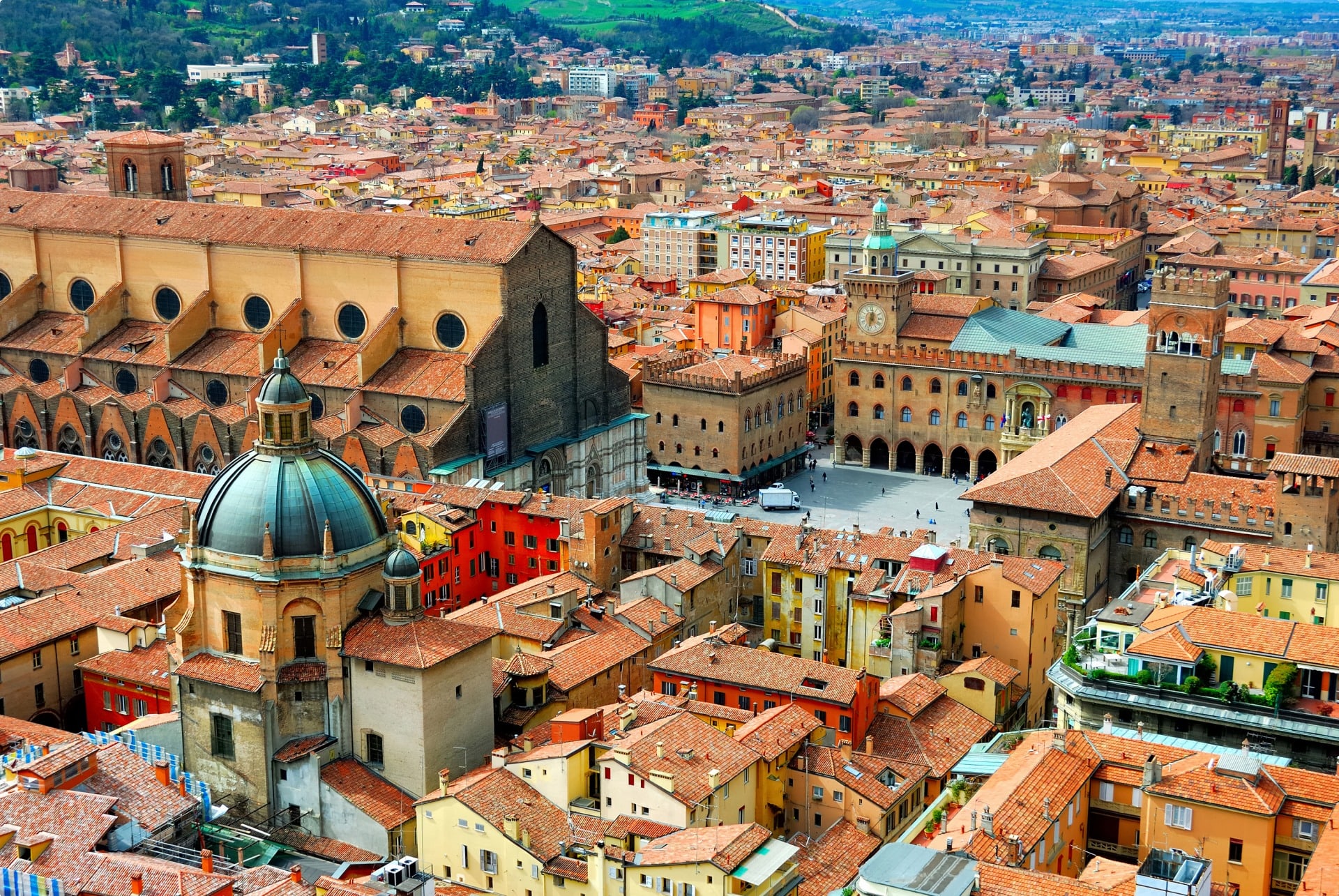
Antiquity
Historians trace human occupation of the territory of Bologna back three thousand years to the Bronze Age. During this people, a population of unknown origin settled in the Apennine region, on the banks of the Apose and Ravone Rivers. By the Iron Age, as early as the ninth century BCE, this population had developed into an authentic civilisation, known as Villanovian. The Villanovians had their own unique culture, with villages inhabited by skilled blacksmiths and potters. They maintained relationships and traded with other civilisations such as the Etruscans, the Greeks, and the Phoenicians.
Sometime later, around the sixth century BCE, the Etruscans under King Felsino gradually surrounded the settlement of villages. They then transformed the area into a city named Felsina by draining the marshes and constructing buildings to substitute for the simple huts of the existing population. The Etruscans extended the trade links already established by the Villanovians to develop the city into the commercial centre of Etruria and one of the most powerful in the region. Today, numerous archaeological remnants of this early civilisation remain.
This prosperous period would end, however, when the Galli Boii invaded around 350 BCE. These Celtic people from the north destroyed the city and the occupied the area for the next two hundred years. The name Bologna is believed to be derived from the Celt word bona for ‘city’.
The Celt domination finally ended in 196 BCE, when they were defeated by Roman troops, and the city became a Roman colony. From 187 BCE, it held a strategic position on the Roman road network, situated on the Via Emilia that connected Placentia to Rimini. It thus held a certain prestige as one of the most important cities on the Italian peninsula, flourishing with many imposing buildings, temples, theatres, public baths, and as many as 20,000 inhabitants.
Middle Ages
As the Western Roman Empire went into decline from the beginning of the 5th century CE, so did Bologna. By the time empire fell in 476, like other cities on the Via Emelia, Bologna had been repeatedly sacked and almost completely destroyed by invading barbarian armies. It is then that, according to the chronicles, the legendary Christian bishop, Petronius, rebuilt the centre of the town and founded the basilica of Santo Stefano, which still exists today.
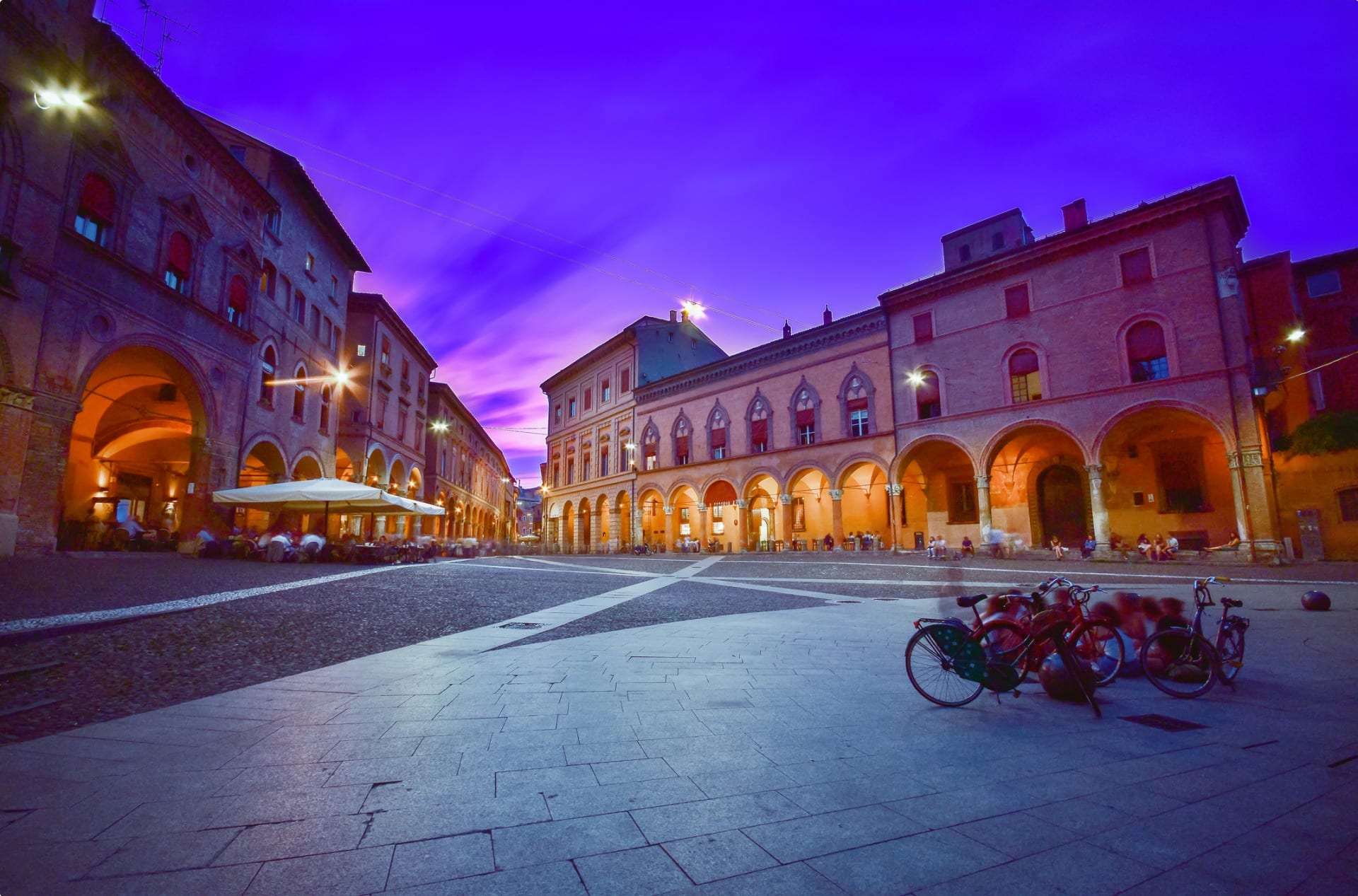
The city then became subject to the Byzantine exarchate of Ravenna as a frontier outpost in the 6th century, before being occupied by various other groups over the next centuries, including the Visigoths, Huns, Goths, and the Lombards. After fifty years of Lombard occupation, it was freed in 774 by Frankish troops under Charlemagne on behalf of the papacy. From here on it regained its former political and economic stability, prospering as a frontier territory of the Carolingian Empire.
By the 11th century, Bologna sought to escape feudal rule by becoming a free commune. The emperor recognised it as such in the early 12th century. From around this time until the 14th century, Bologna’s prosperity peaked as one of the most prominent medieval cities. During this period, it introduced social reforms, becoming the first European city to abolish serfdom; it grew to be one of the ten most populated centres in Europe; and it expanded significantly towards the territories of neighbouring cities.
Consequently, over 100 towers and tower-houses spread throughout the region, the city walls were widened, and grant buildings sprang up all over the cities. Still standing are the Metropolitana di San Pietro, as well as the the University of Bologna – the oldest university in Europe and today still one of the most important in the world. As are the Due Torri, or Two Towers, strategically places at the entry to Bologna, as well as King Enzo’s Palace (the residence of King Enzo of Sardinia).
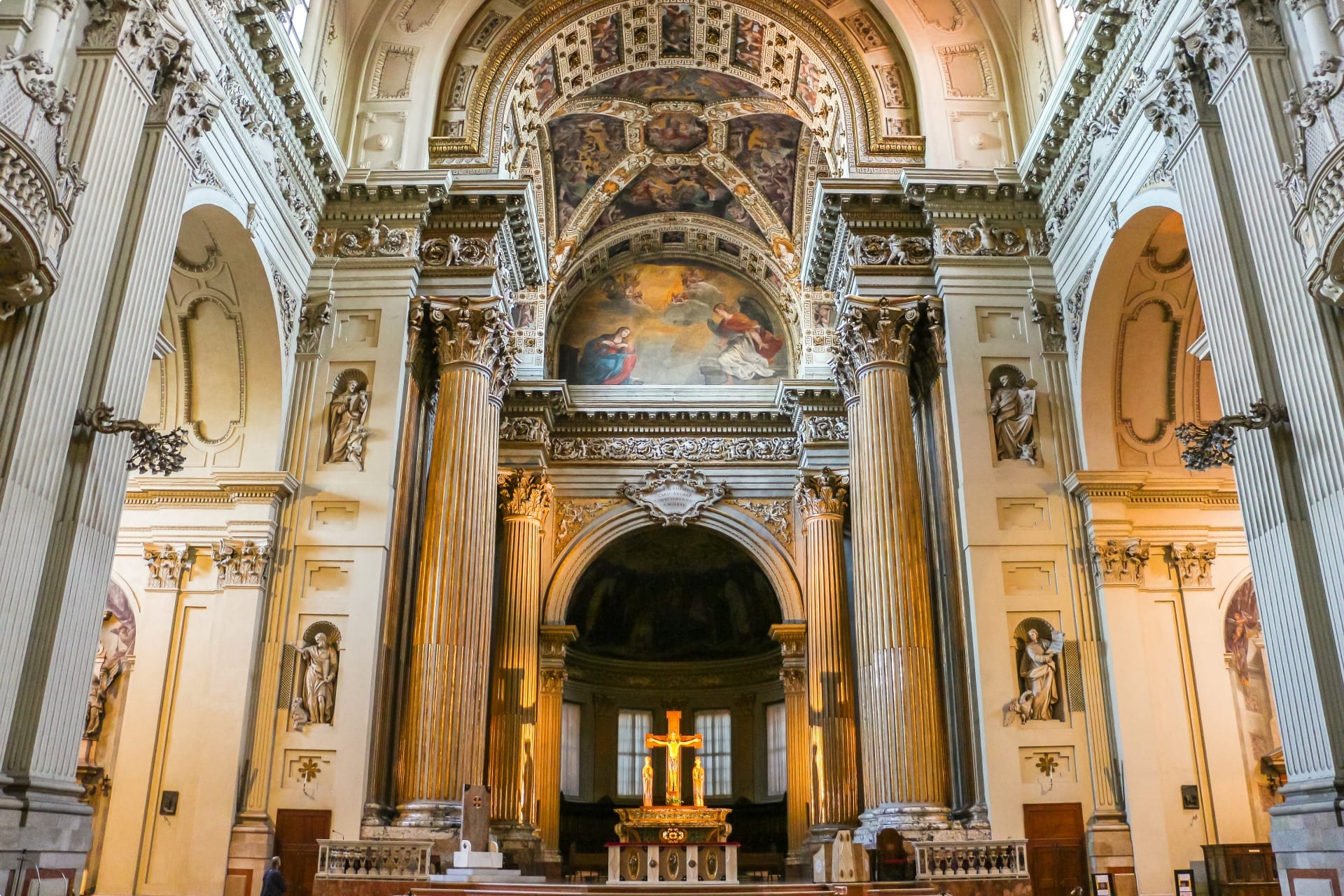
This was not a period without political conflict, however. External powers, especially the Holy Roman Empire and the Papacy, and powerful members of the nobility continually sought influence over the autonomous city. Bologna was able to resist the attempts at external subjugation, however it was severely weakened by the decades of infighting amongst prominent families for control of the town during the late 1200s. This allowed the Pope to impose the rule of his envoy Cardinal Bertrand du Pouget in 1327.
Over the next two hundred plus years that followed, the city was alternately dominated the Visconti lords of Milan, the papacy, republican governments, and then several powerful local families as the city experienced years of bloody civil war. Eventually, in the fifteenth century, the Bentivoglio emerged victorious among the noble families of Bologna to govern the city. They brought a period of stability and economic and cultural growth, serving as great patrons of the arts, and restoring the Palazzo Pubblico, the Palazzo del Podestà and Porta Ravegnana.
Modern Period
The Bentivoglio dynasty ended in 1506, when Pope Julius II invaded the city and reinstated papal rule. Thereafter, for the next three centuries, Bologna served as the northern outpost of the Papal States. It was governed by a cardinal legate of the pope and the Senate of the city.
Bologna became the Papal States’ second most important city after Rome, as it enjoyed a period of lasting peace and prosperity. This saw the building of many magnificent palaces, including the Palazzo dei Banchi in 1565, Piazza Galvani in 1563 and the Ospedale della Morte (today housing the Civic Archaeological Museum) which was also built in 1565. During this time, the city also became an academic centre in Europe for studying neo-Aristotelian literary views.
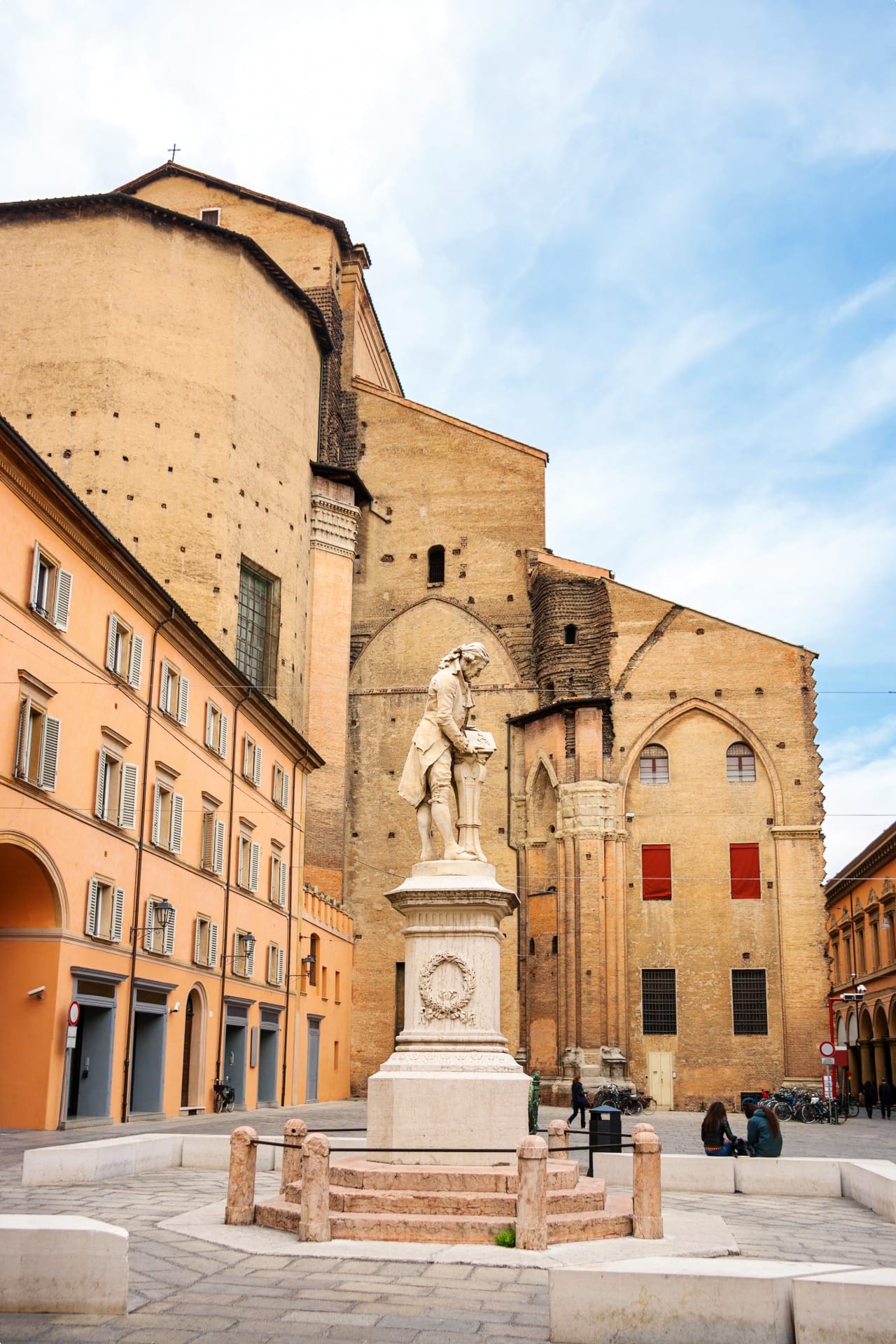
This period of peace was interrupted in 1796, when Napoleon arrived in Bologna, ousting the government of the Church and giving complete power back to the Senate. During the Napoleonic period, the city at first became the capital of the short-lived client republic known as the Cispadana Republic, and then the second city after Milan of the Cisalpine Republic. But with the Congress of Vienna in 1815, it was restored to the papacy.
Papal rule finally ended definitively in 1860, when Bologna voted to join the new unified Kingdom of Italy. The character of some area of the city was drastically changed following unification, as the new ruling class sought to usher in modernity. New large avenues were carved out and several medieval towers were demolished.
During World War II, the city was repeatedly bombed due to its strategic position. Parts of the historic old city centre near the strategic railway station were especially targeted and badly damaged.
Nevertheless, Bologna was able to recover quickly in the post-war period into the rich and important industrial and commercial centre that it remains today. Home to just under 400,000 people, the city is home to the most important motorway and railway junction in the country. It also remains a centre of culture and learning, with its widely respected artistic heritage and prestigious University famous around the world.
Tour of Bologna
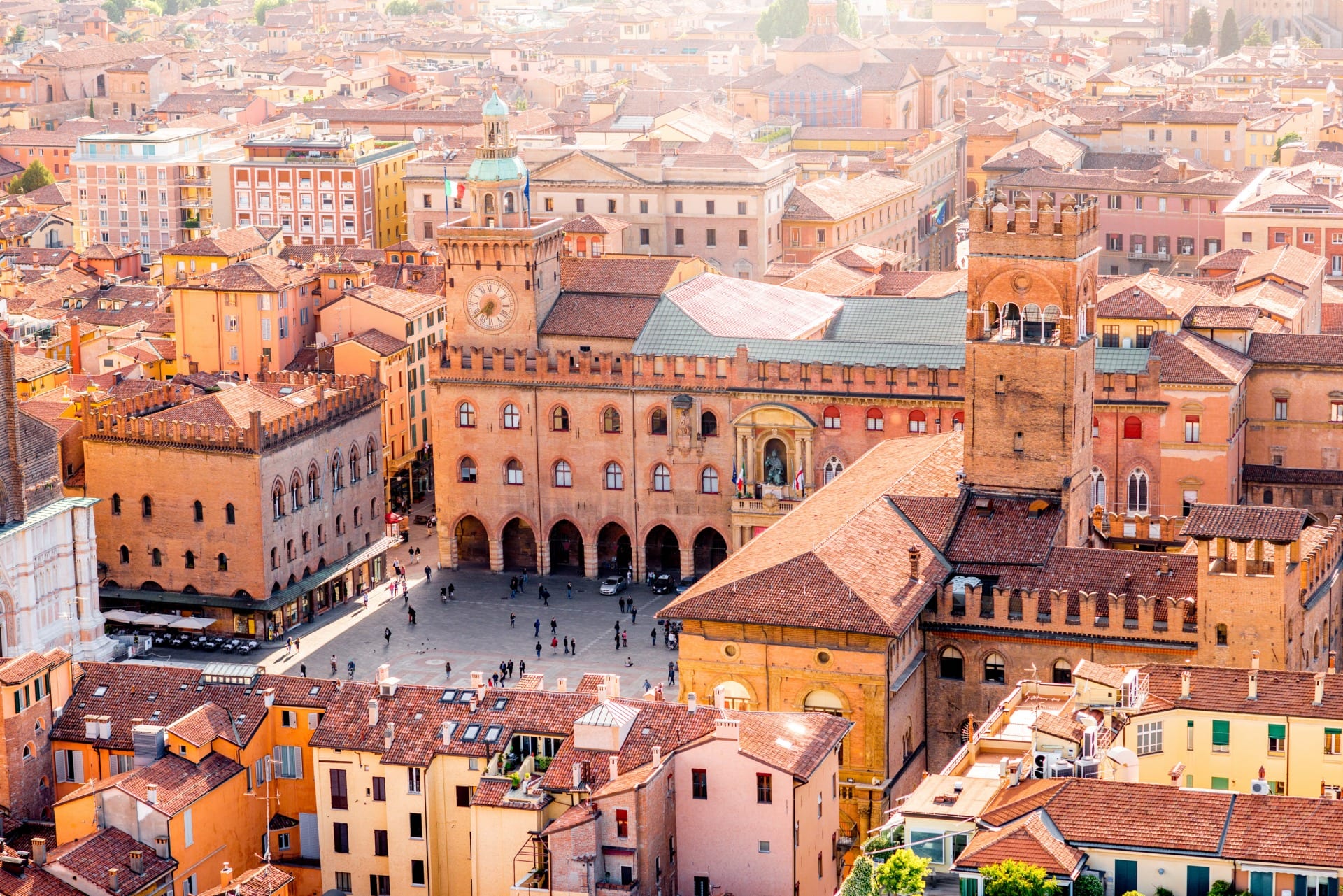
Odyssey traveller visits Bologna as part of our ‘Four Italians: Genoa, Mantua, Onvieto and Bologna Tour’. This escorted, small group tour for senior couples and mature solo travellers, takes you away from some of the better known tourist cities such as Rome, Venice, Milan, Naples, and Florence for example, and allows you to explore some extraordinary places that are not on the usual tourist route. With our Italy travel guide, we concentrate on four cities that have history, art, architecture and beauty to compare with any of their better known, more visited, rivals.
This 21 day tour is particularly for the senior traveller who may have visited Italy before, but now wants to experience something a little different. We take an in-depth look at just four cities, each with an amazing past, and each with something different to reveal. This tour will appeal equally to the solo traveller, or those travelling with a companion, as we search out some lesser known treasures from Italy’s long and often turbulent past. On this tour you can expect to see phenomenal artworks, visit architectural masterpieces from across the ages, taste some fabulous culinary delights, and discover a number of the greatest underrated cities in Italy.
Bologna is a beautiful city, with many medieval and Renaissance buildings to admire as we wander the maze of old streets, many covered with UNESCO protected porticos. We’ll visit the early theatres, galleries, and museums, but we’ll also have time for food tasting, wine drinking, and to just soak up the atmosphere. We’ll also partake on a day trip to nearby attractions in the reggio emilia region, such as the fascinating Roman remains of Rimini.
Remember that Italian cities are often best explored by foot, so don’t forget your walking shoes for a walking tour!
Odyssey Traveller has been serving global travellers since 1983 with educational tours of the history, culture, and architecture of our destinations designed for mature and senior travellers. We specialise in offering small group tours partnering with a local tour guide at each destination to provide a relaxed and comfortable pace and atmosphere that sets us apart from larger tour groups. Tours consist of small groups of between 6 and 12 people and are cost inclusive of all entrances, tipping and majority of meals. For more information, click here, and head to this page to make a booking.
Articles about Italy published by Odyssey Traveller
The following list of articles published by Odyssey Traveller for mature aged and senior travellers to maximise their knowledge and enjoyment of Italy when visiting;
- Questions About Italy
- Trip Advice for Travellers going to Italy
- The Roman Empire
- Who were the Roman Emperors
- 10 Great Books to Read Before You Visit Italy
- Secrets of Venice
- History of Genoa, Rival to Venice
- Southern Italy
- Maritime Republics Amalfi Coast
- Key Men and Women of Renaissance Florence
You can also browse all the articles published on Italy by Odyssey Traveller.
External articles to assist you on your visit to Italy
Related Tours
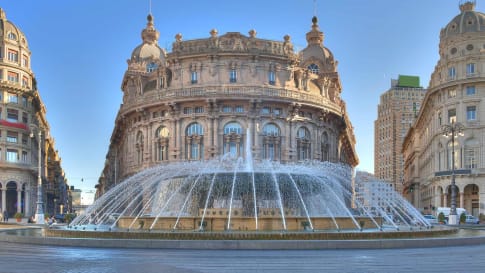
21 days
Sep, Apr, OctFour Italians: Genoa, Mantua, Orvieto and Bologna
Visiting Italy
A small group tour for senior couples and mature solo travellers to Genoa, Mantua, Orvieto and Bologna. Places where the Renaissance shone beyond Florence, Venice and Rome. Italy is one of the great countries of Europe this program with like minded people takes you beyond the regular path of travellers to see and learn more.
From A$15,995 AUD
View Tour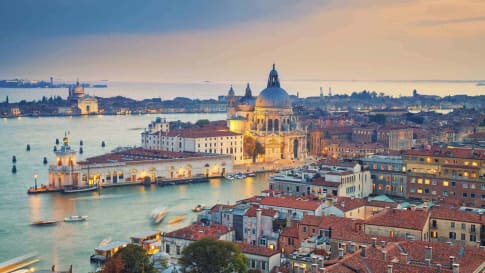
18 days
Aug, SepArt and History of Italy | Small Group Tour for seniors
Visiting Italy
Taken as a whole, Italian Civilization (which includes, of course, the splendid inheritance of Ancient Rome) is absolutely foundational to Western culture. Music, Painting, Sculpture, Architecture, Literature, Philosophy, Law and Politics all derive from Italy or were adapted and transformed through the medium of Italy.
From A$16,695 AUD
View Tour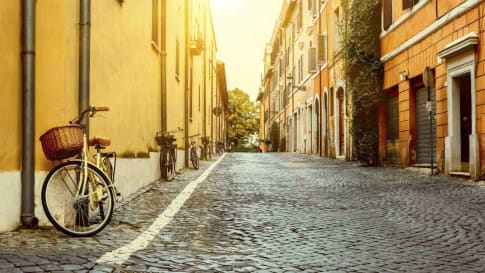
22 days
Sep, Apr, MarHeritage, Culture and History of Italy | Small Group Tours for Seniors
Visiting Italy
Rome, the world’s first superpower, lasted for almost a thousand years. In this small group tour for senior couples and solo travellers we thread our way through the Rome of the Emperors, then through the Italy of the Renaissance, Michelangelo, the Medici, and the Borgia. In the south, we visit the cosmopolitan city of Naples as well as Pompeii and the island retreat of Capri.
From A$13,695 AUD
View Tour
11 days
Sep, MayHeritage, culture, history of Italy, seniors small group - Short Tour
Visiting Italy
Odyssey's small group tour features the best of the Italian countryside as well as the great cities and icons of Italy. We will see the Renaissance cities of Florence, Pisa, and Lucca as well as the Umbrian medieval cities of Perugia.
From A$8,195 AUD
View Tour
14 days
Sep, MayLakes and Landscapes of Northern Italy | Short Small Group Tour for Seniors
Visiting Italy
Our small group tour begins in the cosmopolitan city of Milan and ventures to 2 of the region's lakes - Garda and Maggiore. Our tour uncovers a wealth of natural beauty, castles, serene waters, snow-capped mountains, and breathtaking scenery.
From A$9,225 AUD
View Tour
21 days
Apr, Aug, MayRenaissance Italy Tour: Story of Five Families
Visiting Italy
Explore Renaissance Italy on this small group tour though an examination of five significant city states. Florence, Urbino, Ferrara, Mantua and Milan were all dominated by families determined to increase the status of their city through art and architecture. Spend time coming to know the men and women who helped create the cities, as well as the magnificent legacy they left behind.
From A$14,295 AUD
View TourRelated Articles

Ancient Roman Luxury Villas, Italy
Roman houses for wealthy people built in the times of the Republic and the Empire. Popular locations included on the lakes of Northern Italy, in the hills to the East of Rome, on the bay of Naples, and outside of Pompeii.

Bari, Italy
Bari, Italy Aerial view of Bari, Italy. While travel guides and blogs have begun to tout Apulia as Italy’s ‘newest hotspot’ (Vogue Australia), the province’s capital, Bari, has been unfairly neglected. But we think this…
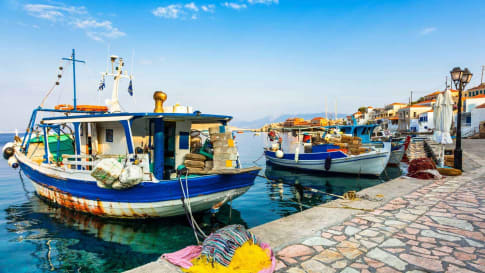
Empires Crossing the Mediterranean: 1130-1300
As a sea connecting continents and stretching from the Atlantic Ocean in the west to Asia in the east, the Mediterranean has for centuries been a centre of trade and exploration.

Five Women of the Renaissance period to see on tour
Five Incredible Women of the Renaissance | Small Group Tours The Renaissance stands as one of humanity’s most profound intellectual and artistic revolutions, often overshadowed by narratives of renowned men and their contributions. While historical…
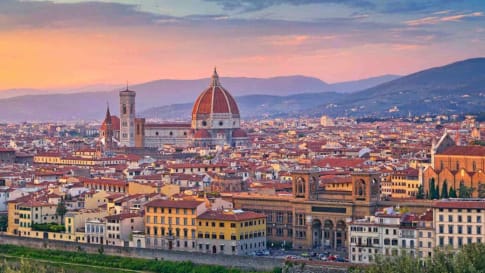
History of a City: Florence, Italy
Florence or Firenze, article provides an overview of the history from inception from the Romans to Mussolini with plenty of the Renaissance covered. Includes a list of Museums and places to see in Tuscany. Background material for a small group package tour to Italy or long stay in Florence.

History of Genoa, Rival to Venice
In this article, we will look at the history of Genoa, and its rivalry with Venice that led to several wars fought between the two city-states in the 12th to 14th centuries.
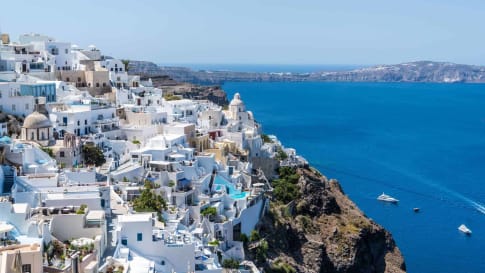
History of Santorini
History of Santorini: From the Minoans to the Greek Republic The history of the Greek islands of Santorini (or Thera) stretches back to the Neolithic Era more than 3,000 years ago. A place of great importance…
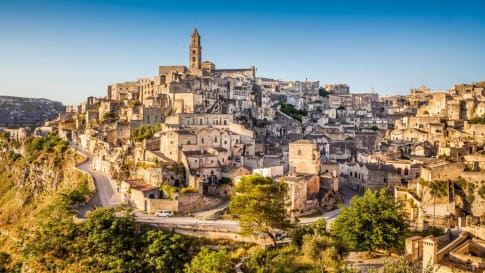
Matera, Italy
Matera, Italy The ancient town of Matera, Basilicata. The ancient city of Matera, in southern Italy, is among the world’s oldest continuously inhabited cities, a place of primordial beauty, where cave houses are carved directly…
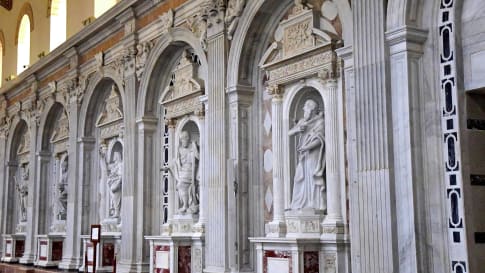
Messina, Italy
Messina, Italy Messina cityscape. Only a few kilometres from the Italian mainland, the city of Messina has long been the gateway to Sicily, a fascinating historical centre with a Belle Epoque twist. The city of…
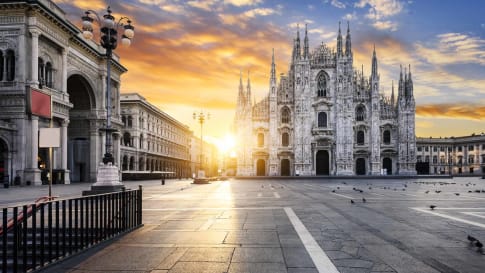
Milan, Italy
Article about Milan, one of the great cities of Northern Italy for mature and senior travellers to explore on a small group tour for couples and solo travellers. Learn about Renaissance Italy, Rome, the Romans as well as Florence and the Pilgrims walks offered by Odyssey.
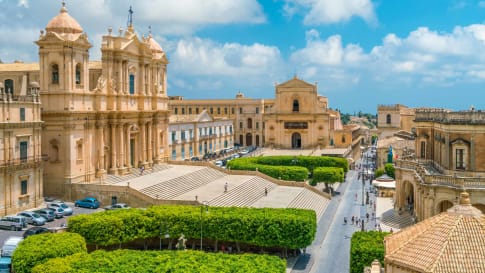
Noto, Italy
Noto, Italy Palazzo Ducezio and the Basilica Minore di San Nicolò, Noto. Long off the tourist trail, the city of Noto – capital of Sicilian baroque – is one of the most beautiful cities in…
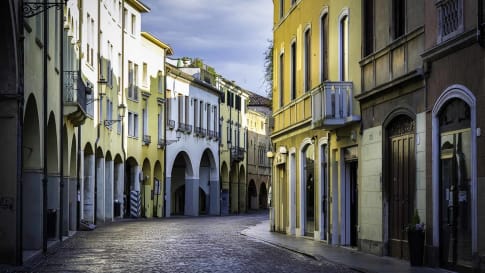
Padua, Italy
The History and Attractions of Padua By Marco Stojanovik Padua city is an intellectual, artistic, and economic centre in northern Italy, situated on the River Bacchiglione, west of Venice. The city has a long history…

Palermo, Sicily
Palermo, Sicily Palermo Cathedral mixes Arab and Norman styles, a testament to Sicily’s multicultural history. The capital of Sicily and the island’s chaotic heart, Palermo is where civilisations – Arab, Norman, Italian – collide. Palermo…
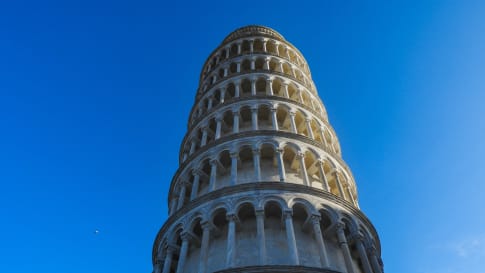
Pisa & Genoa, Italy
The cities of Italy, Pisa and Genoa rivalled Venice and its merchants. This article explores the affiliation to protect against Islam and then the war that followed. An Antipodean travel company serving World Travellers since 1983 with small group educational tours for senior couples and mature solo travellers.
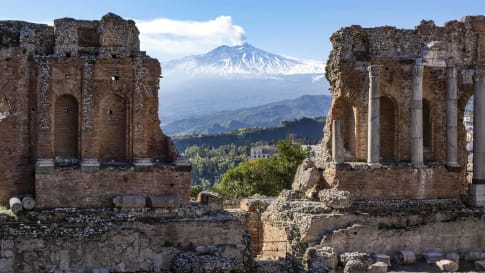
Sicily, Italy
Sicily, Italy An autonomous region of Italy, Sicily is a world apart: an ancient and rugged island shaped by successive waves of civilisation. Long the crossroads of the Mediterranean, Sicily is surprisingly untouched by modernity,…
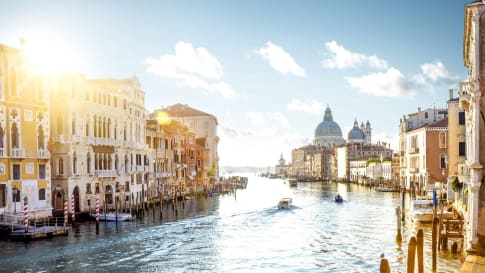
Venice, Italy
Explore the sights and wonders of Venice, 'La Serenissima'. A medieval powerhouse, with its stunning architecture, iconic canals, waterways and gondolas. Odyssey offers small group tours for mature and senior travellers couples and solo travelers to Venice and Italy.

